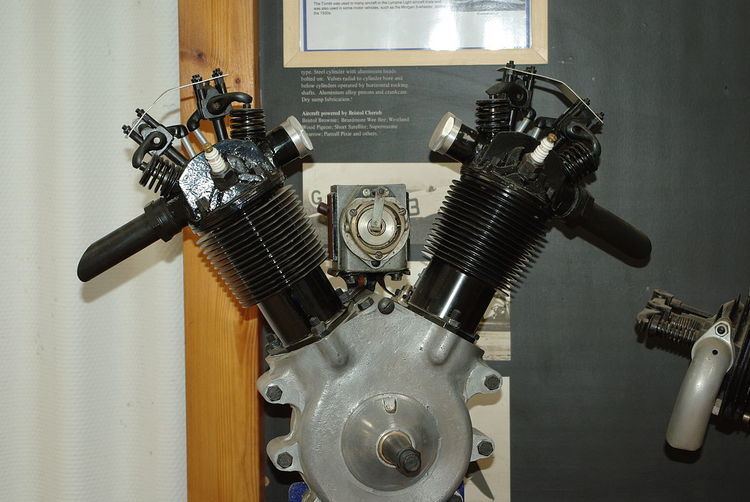 | ||
The Blackburne Tomtit was a 670 cc V-twin aero engine for light aircraft that was designed and produced by Burney and Blackburne Limited. Burney and Blackburne were based at Bookham, Surrey, England and was a former motorcycle manufacturer.
Contents
Design and development
The Blackburne Tomtit engine was developed from Blackburne's motor-cycle engines. The first one adapted to aircraft use was the best performing engine at the Lympne light aircraft trials of 1923, despite the lack of refinement. The Tomtit was a modified version of the Lympne 696 cc V-twin, marketed specifically for flight.
The Tomtit could run upright or inverted and was the first British engine to fly inverted, in the ANEC I. The inverted configuration was more common, but the Avro 558 used it in the upright arrangement, and the Avro 560 flew with both upright and inverted Tomtits.
Applications (including early Lympne 1923 version)
ANEC IAvro 558Avro 560BICh-3 (the world's first flying wing)Darmstadt D-11 Mohamedde Havilland Humming BirdGloster GannetGnosspelius GullGribovsky G-5Handley Page H.P.23Heath ParasolParnall Pixie IIReid biplaneShort CockleWheeler SlymphSpecifications
Data from Flight
